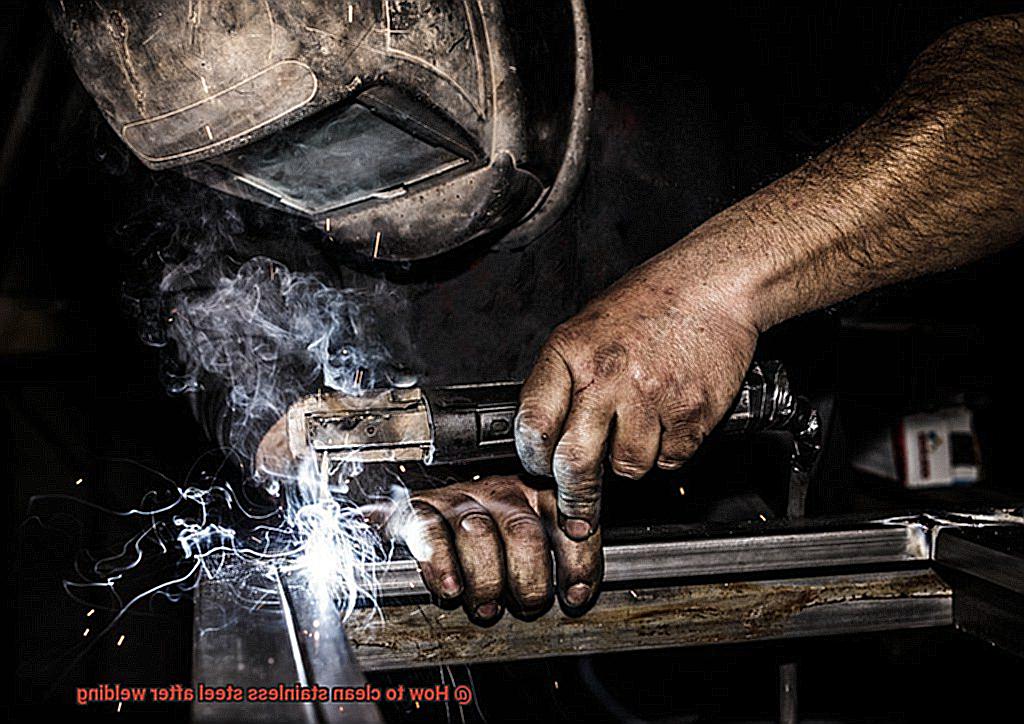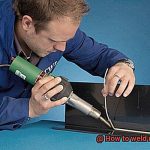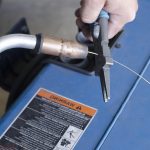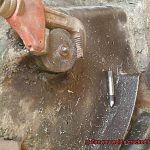Welding is an essential skill for many businesses.
But it can also leave behind smears and discoloration on stainless steel surfaces. To make sure your welds look clean and attractive, you need to know how to clean stainless steel after welding.
It’s also important to prevent the surface from rusting or other damage. If that’s what you’re looking for, you’ve come to the right place.
In this blog post, we’ll cover best practices for cleaning stainless steel after welding, as well as tips and tricks to get the job done quickly and efficiently. First, we’ll stress the importance of proper preparation before starting any cleaning process.
Then, we’ll discuss various methods of removing stainless steel like abrasive blasting and chemical cleaners. Finally, we’ll share advice on how to leave a shiny finish on your welds.
With these tips in hand, your welds will look great and last longer than ever before.
Removing Visible Debris and Residue
Contents
- 1 Removing Visible Debris and Residue
- 2 Cleaning the Surface with a Degreaser or Solvent
- 3 Using an Acid Solution to Remove Heat Marks, Discoloration, or Oxidation
- 4 Applying the Acid Solution
- 5 Rinsing the Surface with Clean Water
- 6 Drying the Surface with a Dry Cloth
- 7 Safety Considerations When Handling Chemicals and Acids
- 8 Conclusion
Welding stainless steel requires more than just skill and expertise; it also requires proper post-weld care.
Removing visible debris and residue from the stainless steel’s surface is essential in order to guarantee a clean, high-quality weld and prevent rust and corrosion. Fortunately, there are several ways to achieve this.
A wire brush or grinder can be used to scrape off any slag, spatter, or excess weld material. Alternatively, you can soak the stainless steel in a vinegar solution – acetic acid breaks down any rust or residues on the surface.
It’s important to remember that when handling chemicals or acid solutions, you should always use appropriate protective equipment.
Cleaning the Surface with a Degreaser or Solvent
Polishing stainless steel after welding ensures that your masterpiece will last for decades.
And the most effective way to do this is by using a degreaser or solvent. Degreasers and solvents are powerful cleaning agents that can be used to remove oil, grease, and other contaminants from stainless steel’s surface.
They can also dissolve and eliminate any residual welding flux or other harmful substances left behind by the welding process. As there are many types of degreasers and solvents available, it’s important to select the right one for your individual needs.
When using a degreaser or solvent, always make sure that the metal is cool and free from any residue or debris left by welding before starting to clean. To protect yourself from potential harm, it’s essential to wear protective gloves and eyewear when handling chemicals.
Additionally, certain solvents may require a neutralizing agent after use in order to prevent any remaining residue from damaging the metal over time.
Using an Acid Solution to Remove Heat Marks, Discoloration, or Oxidation
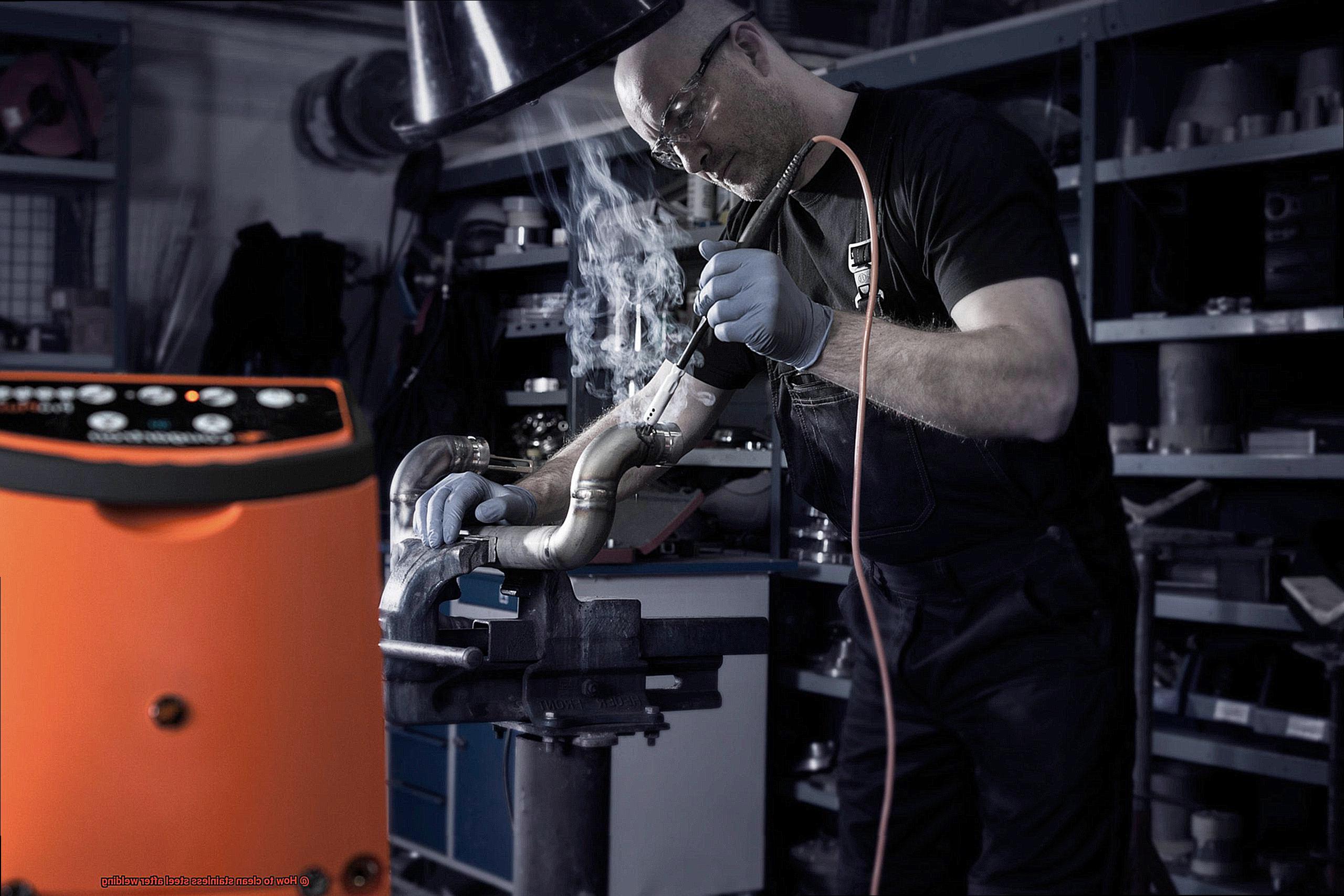
If you’ve ever welded stainless steel, you know that heat marks, discoloration, and oxidation can mar the finish of your workpiece.
Fortunately, there is a simple way to get rid of these blemishes: an acid solution. Acids such as nitric acid, phosphoric acid, hydrochloric acid, citric acid, and acetic acid can all be used to remove heat marks, discoloration, and oxidation from stainless steel.
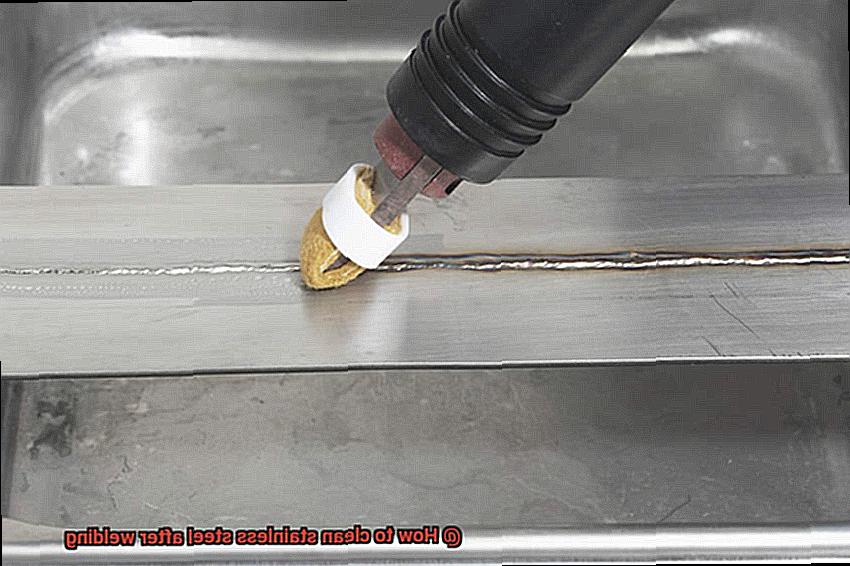
These acids dissolve the surface layer of metal affected by the heat of welding, leaving you with a clean slate to work with. But it’s important to take safety precautions before using any of these acids on your stainless steel welds.
Wear gloves and eye protection when handling acidic products and make sure the work area is well ventilated. Follow all manufacturer instructions when using an acid solution to clean your welds.
After applying the acid solution to your welds for a few minutes, rinse off any residual acid with clean water. Then dry off the surface with a clean cloth or towel and make sure that all signs of the acidic solution are gone.
Using an acid solution is an effective way to remove heat marks, discoloration, or oxidation from stainless steel welds.
Applying the Acid Solution
Welding stainless steel can be a cost-effective and durable finished product, but the heat generated during the process will leave behind marks and discoloration that can be difficult to remove.
Fortunately, an acid solution is an easy and effective way to restore your stainless steel’s original condition. When applying an acid solution, it is essential to take proper safety precautions.
Wear protective gloves, goggles, and clothes, as well as making sure you have proper ventilation in order to avoid inhaling any potentially harmful fumes. Additionally, not all types of stainless steel can be treated with this method; for this reason, it is best to consult with a specialist or the manufacturer of the stainless steel to determine the best cleaning procedure for your specific needs.
Start by scrubbing the stainless steel’s surface with water and soap to remove any dirt, grease, or grime.
Rinsing the Surface with Clean Water
When it comes to cleaning stainless steel after welding, rinsing the surface with clean water is an essential step.
This action helps to remove any remaining cleaning agents or debris from the surface, reducing the risk of damage or staining. It’s important to note that hard water should not be used for this step; instead, opt for soft water or distilled water.
Once you have finished rinsing the surface, use a clean cloth or towel to dry it completely. Patting the surface dry rather than rubbing it will help to prevent scratching.
After drying, you can apply a stainless steel cleaner or polish to give the surface a beautiful finish. In short, don’t skip this important step when it comes to cleaning stainless steel after welding.
Rinsing with clean water is like taking a shower after getting dirty in the garden – it’s necessary for achieving a stunning result.
R47W9dQQyDY” >
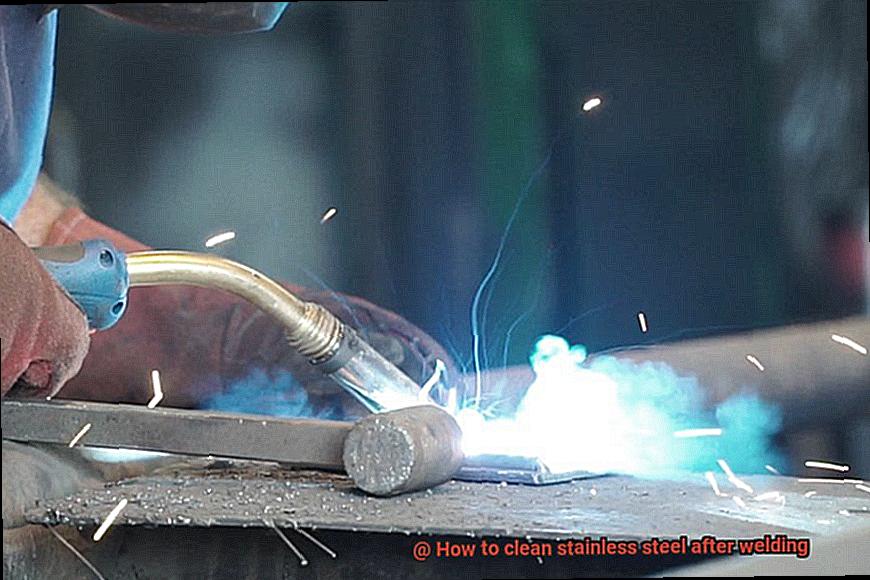
Drying the Surface with a Dry Cloth
Cleaning welded stainless steel isn’t complete until the surface is dried with a dry cloth.
This final step is essential in preserving the metal’s appearance and preventing rust or corrosion. To understand why this step is so important, think of it like taking a shower – you want to make sure all of the dirt and grime is washed away before drying off with a clean cloth or towel.
When drying the surface of stainless steel after welding, it’s important to use a soft, dry cloth such as a microfiber cloth. Abrasive materials such as rough sponges or steel wool can scratch or damage the surface, making it vulnerable to rust and corrosion.
If there are any marks or residue on the surface after drying, you can use a polishing compound for extra shine and protection – just be sure to follow all manufacturer instructions.
Safety Considerations When Handling Chemicals and Acids
When it comes to cleaning stainless steel after welding, safety should always be the top priority.
To ensure the weld’s durability and long life, proper precautions must be taken when handling chemicals and acids during the process. Before beginning, it is essential to wear protective gear such as gloves, eye protection, and a respirator mask to prevent any exposure to chemicals or acids.
Additionally, all labels and safety data sheets of the chemicals and acids used should be read and understood thoroughly. When using acids like hydrochloric acid or phosphoric acid, dilute them properly and use them in well-ventilated areas.
Ventilation is also critical in preventing any harm from fumes that may be emitted during the cleaning process. To ensure a well-ventilated area, use exhaust fans or open windows if possible.
Taking these safety considerations into account is essential for keeping yourself safe while also keeping your stainless steel looking like new.
Also Read: Can You Weld Titanium to Steel? – The Welding Guru
Conclusion
For a durable, attractive finish, cleaning stainless steel after welding is essential.
With the right preparation and safety equipment, you can achieve a clean and shiny finish on your welds. Start by washing the surface with water and soap to remove any grime or grease.
Then use a wire brush or grinder to scrape off any slag or spatter. To eliminate oil, grease, and other solids from the surface, try using a degreaser or solvent.
An acid solution is an effective way to remove heat marks, discoloration, or oxidation from your welds. However, when using these products it’s important to take safety precautions: wear protective gloves and eyewear, and ensure the work area is well ventilated.
This will help prevent rusting or corrosion in the future.
